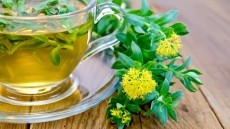Horny Goatweed linked to better bone health
bone mineral density (BMD) at the hip and lower back, and may have
benefits against osteoporosis, suggests a new study.
The herb, also known as Horny Goatweed, is most commonly associated with sexual health with numerous species of Epimedium reported to be aphrodisiacs.
Results of a new 24-month randomised, double-blind, placebo-controlled clinical trial suggest that Epimedium brevicornum maxim may also have benefits for bone health, with supplementation resulting in increases in BMD of about 1.5 per cent after two years, while placebo led to weakening of the bones.
Osteoporosis is estimated to affect about 75m people in Europe, the USA and Japan.
According to the International Osteoporosis Foundation, the total direct cost of osteoporotic fractures is €31.7bn in Europe, and 17.5bn in the US (2002 figure).
The total annual cost of osteoporosis in the UK alone is over £1.7bn (€2.5bn), equivalent to £5m (€7.3m) each day.
"Epimedium-derived phytoestrogen flavonoids (EPFs) exert a beneficial effect on preventing bone loss in late postmenopausal women," wrote lead author Ge Zhang in the Journal of Bone and Mineral Research .
The researchers, from the Chinese University of Hong Kong and the Shanghai University of Chinese Medicine, recruited 85 healthy late postmenopausal women, and randomly assigned them to receive either a daily a daily dose of EPF (60 mg icariin, 15 mg daidzein, and 3 mg genistein) or placebo.
All the women received a daily calcium supplement (300 mg).
From the sexual health point of view, the active ingredient in Epimedium is said to be icariin, which can be found in standardised extracts in concentrations ranging from five to 60 per cent.
Zhang and co-workers report that, after two years of supplementation, BMD at the hip (femoral neck) and lower spine (lumbar) increased by 1.6 and 1.3 per cent, respectively, for the EPF group, and decreased by 1.8 and 2.4 per cent, respectively, for the placebo group.
"The difference in lumbar spine between the two groups was significant at both 12 and 24 months, whereas the difference in the femoral neck was marginal at 12 months and significant at 24 months," wrote the researchers.
While levels of bone biochemical markers did not change for women in the placebo group, supplementation with EPF significantly decreased levels of deoxypyrdinoline (a marker of bone resorption) by 39 per cent after two years.
Concerns over potentially damaging changes to uterus health were not observed, said the researchers, with no increase in endometrial (lining of the uterus) thickness observed in either group.
The results are loosely in-line with similar results with soy isoflavones, another class of phytoestrogens.
A recent meta-analysis reported that a 90 mg/d dose of soy isoflavones may improve bone density ( European Journal of Clinical Nutrition , doi: 10.1038/sj.ejcn.1602748).
Previous studies from China have also linked soy isoflavones to increases in bone mineral density (BMD), while a recent large study in the Archives of Internal Medicine (2005, Vol. 165, pp. 1890-1895) reported that high soy consumption was linked with a 48 per cent decrease in fractures for women who had been menopausal for less than 10 years Source: Journal of Bone and Mineral Research July 2007, Volume 22, Pages 1072-1079, doi: 10.1359/jbmr.070405 "Epimedium-Derived Phytoestrogen Flavonoids Exert Beneficial Effect on Preventing Bone Loss in Late Postmenopausal Women:
A 24-Month Randomized, Double-Blind and Placebo-Controlled Trial" Authors: G. Zhang, L. Qin, Y. Shi












